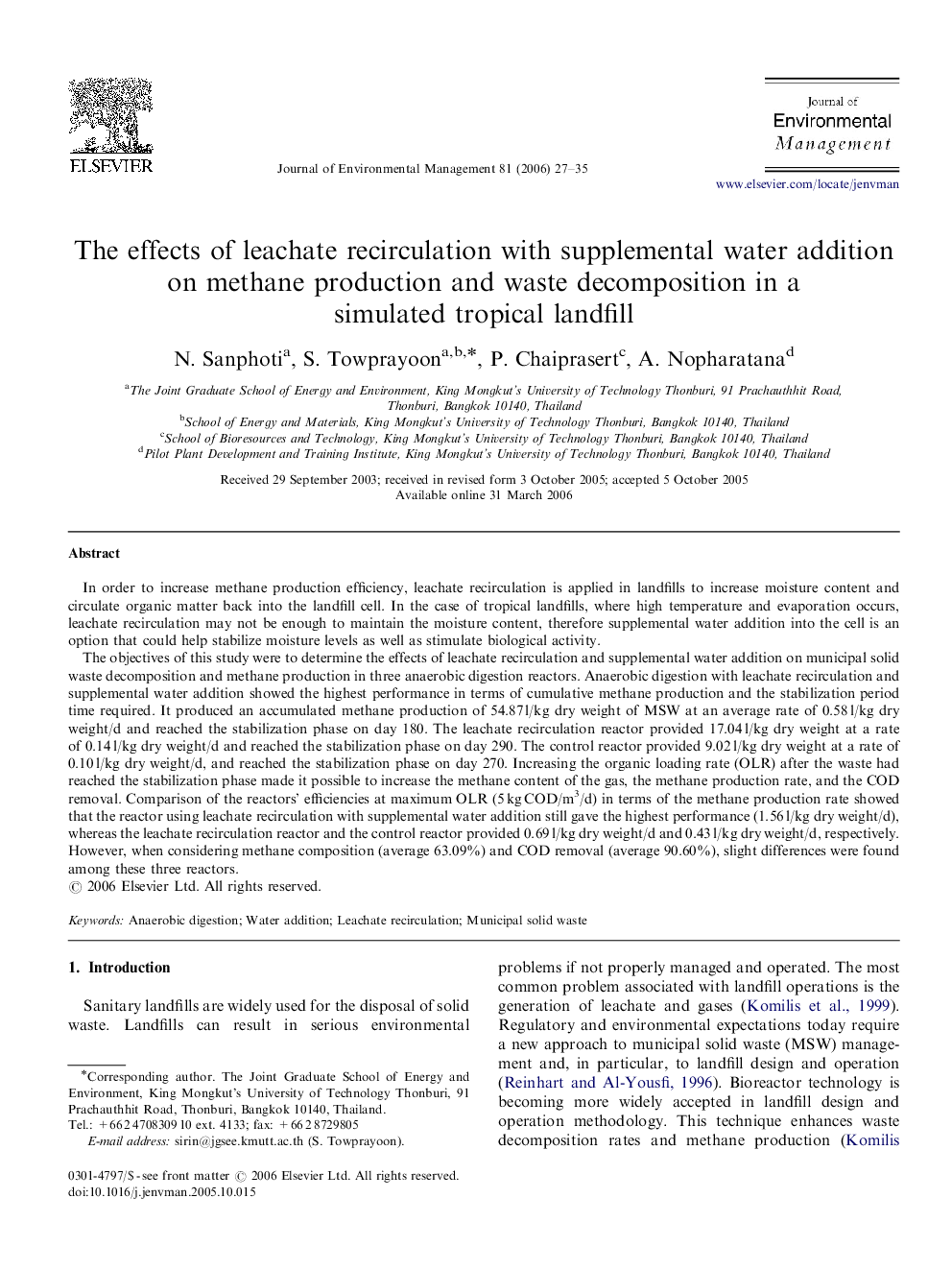| Article ID | Journal | Published Year | Pages | File Type |
|---|---|---|---|---|
| 1058163 | Journal of Environmental Management | 2006 | 9 Pages |
In order to increase methane production efficiency, leachate recirculation is applied in landfills to increase moisture content and circulate organic matter back into the landfill cell. In the case of tropical landfills, where high temperature and evaporation occurs, leachate recirculation may not be enough to maintain the moisture content, therefore supplemental water addition into the cell is an option that could help stabilize moisture levels as well as stimulate biological activity.The objectives of this study were to determine the effects of leachate recirculation and supplemental water addition on municipal solid waste decomposition and methane production in three anaerobic digestion reactors. Anaerobic digestion with leachate recirculation and supplemental water addition showed the highest performance in terms of cumulative methane production and the stabilization period time required. It produced an accumulated methane production of 54.87 l/kg dry weight of MSW at an average rate of 0.58 l/kg dry weight/d and reached the stabilization phase on day 180. The leachate recirculation reactor provided 17.04 l/kg dry weight at a rate of 0.14 l/kg dry weight/d and reached the stabilization phase on day 290. The control reactor provided 9.02 l/kg dry weight at a rate of 0.10 l/kg dry weight/d, and reached the stabilization phase on day 270. Increasing the organic loading rate (OLR) after the waste had reached the stabilization phase made it possible to increase the methane content of the gas, the methane production rate, and the COD removal. Comparison of the reactors’ efficiencies at maximum OLR (5 kg COD/m3/d) in terms of the methane production rate showed that the reactor using leachate recirculation with supplemental water addition still gave the highest performance (1.56 l/kg dry weight/d), whereas the leachate recirculation reactor and the control reactor provided 0.69 l/kg dry weight/d and 0.43 l/kg dry weight/d, respectively. However, when considering methane composition (average 63.09%) and COD removal (average 90.60%), slight differences were found among these three reactors.
